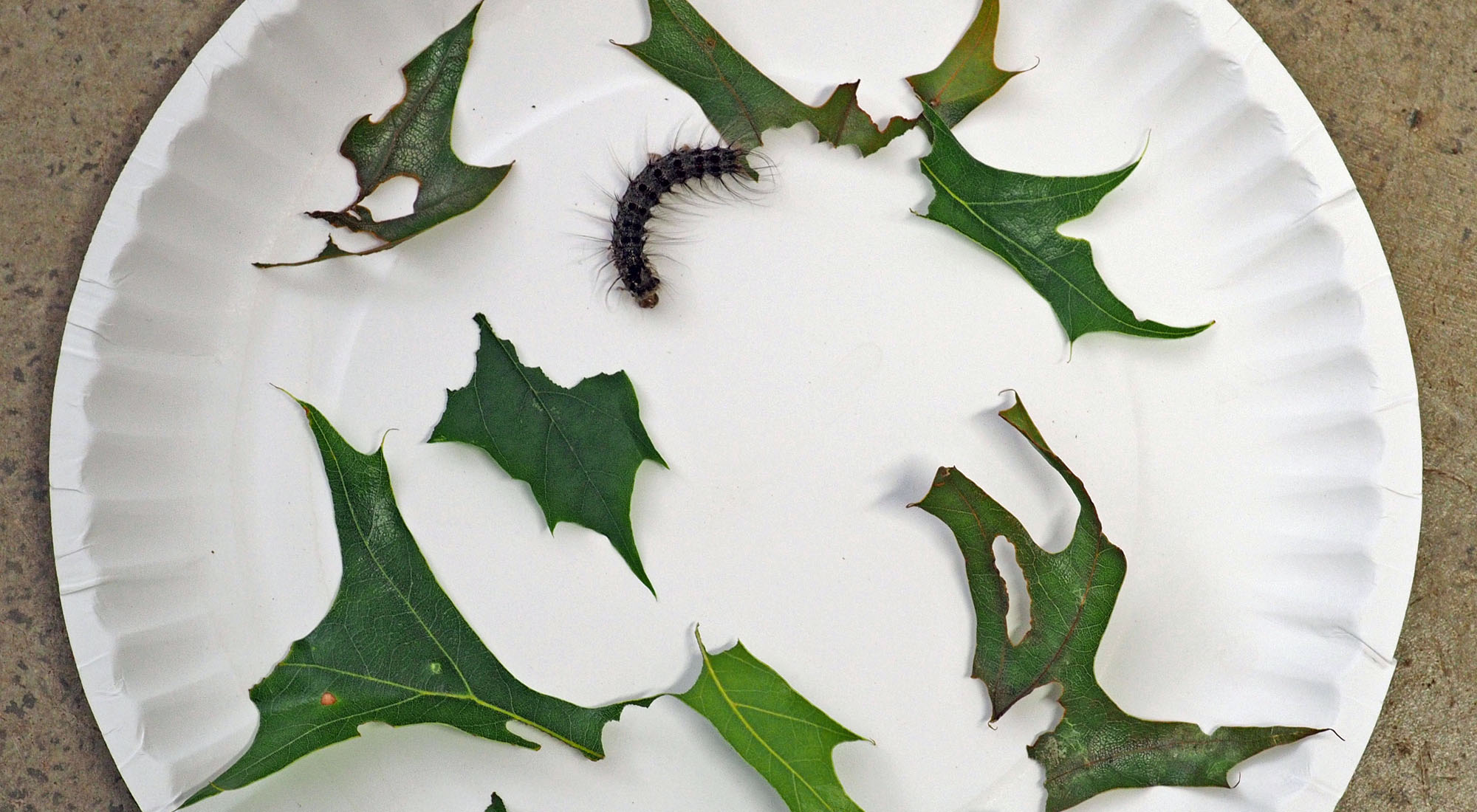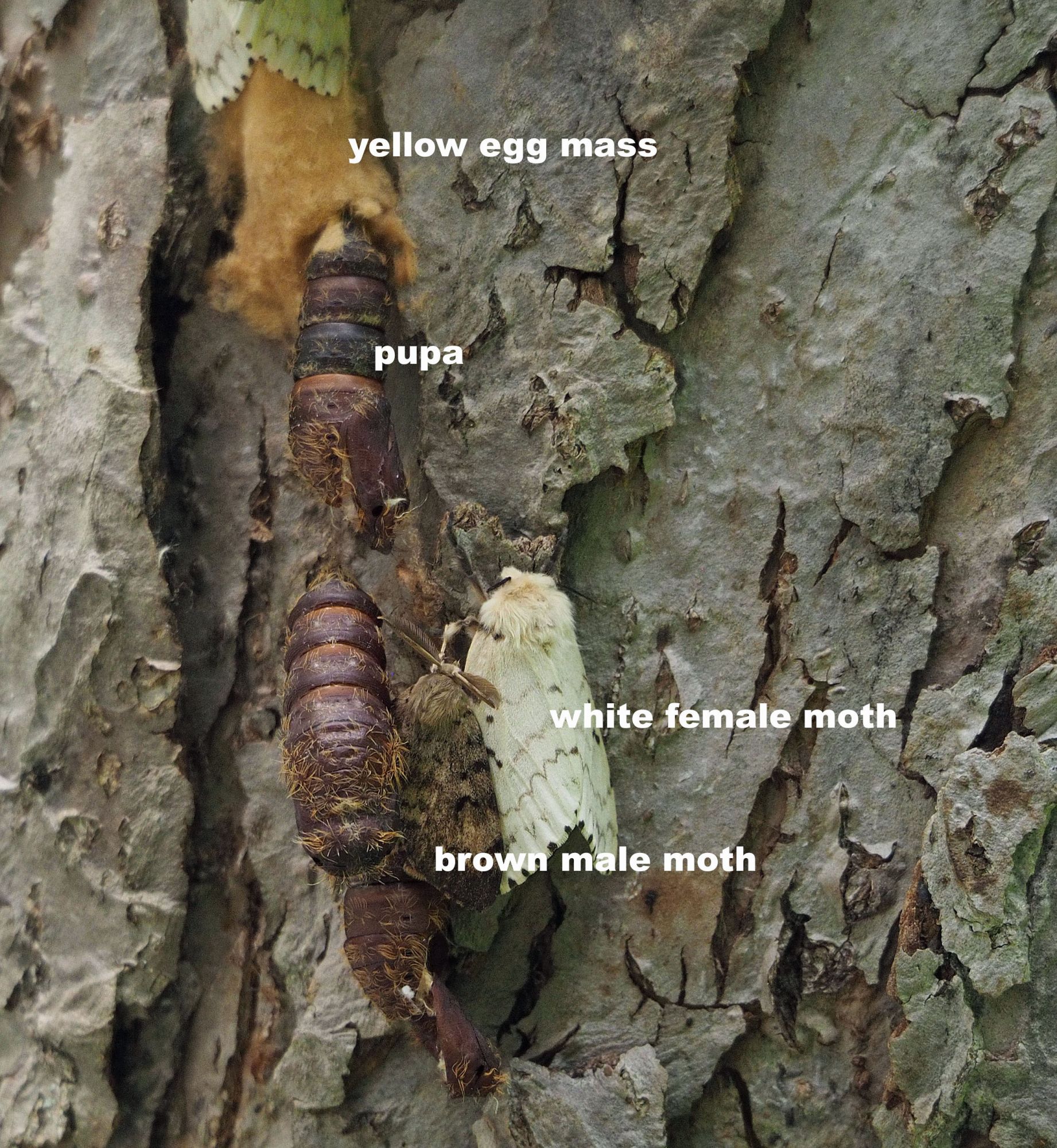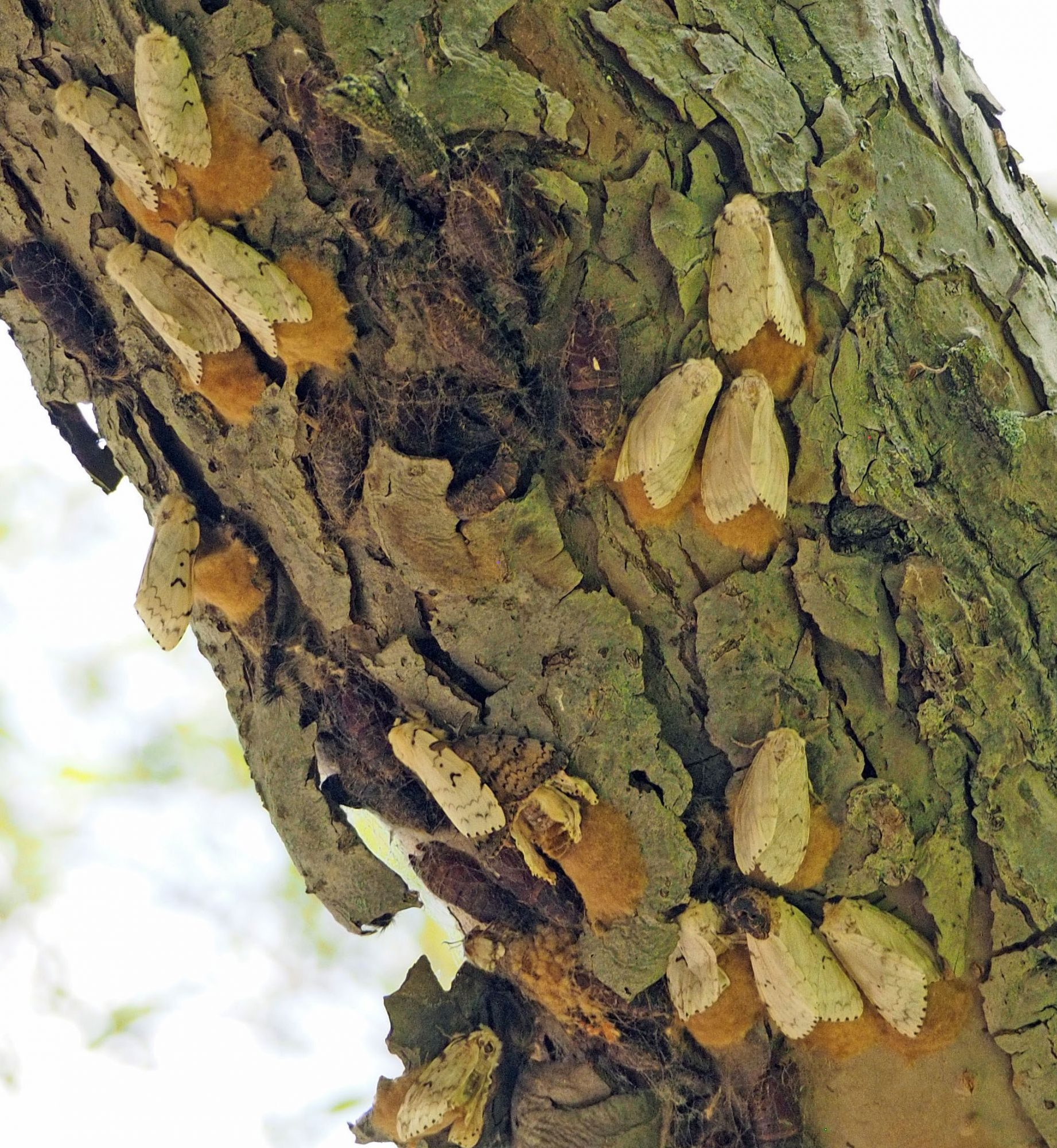By John Deming
Gypsy moths are back. Clark Lakers may recall a major infestation in the late 1980s. Faced with massive defoliation of trees, Jackson County launched an aerial spray program. From the air, they released a bacteria found naturally on leaves and in the soil called Btk. This proved highly effective, as for decades it nearly eliminated the life cycle of the gypsy moth.
Should you be concerned?
Gypsy moths can kill a tree, especially one stressed by heat, drought or old age. Some trees recover, others will not. Should a tree on your property die from gypsy moth infestation the removal could be expensive. One Clark Laker recently paid $4000 to remove an oak tree adjacent to his house.
While in the caterpillar phase, they primarily eat oak leaves, but can also be found eating leaves of willows, maples, and ash. The caterpillars climb the trunks to feed on leaves. Damaged leaves fall to the ground along with black pellets called frass (excrement). Many people around the lake are finding frass on their decks, driveways, and outdoor furniture. As the caterpillar grows, the frass also increases in size.
Once on the tree, the caterpillar can form a silk thread that allows them to suspend themselves. Wind blows them from one tree to another. They eat until they reach maturity (about 2 inches long) and then form a pupa (or cocoon).
Ten days later, a moth emerges. Females are light colored, don’t fly, and emit a pheromone to attract males. Males are dark brown and do fly. A male’s erratic flight pattern allows it to detect the presence of females. After mating, the female deposits a mass of 50 to 1500 eggs, 1 to 3 inches in size and tan in color. Both the male and female moths adhere to the egg mass until they die off, leaving behind the beginning of a new generation.
If you have an infestation, how do you get rid of it?
The most effective method is to spray the trees from the air with Btk late in May or early June. Newly hatched caterpillars are most vulnerable then, and the problem goes away. Residual Btk can reduce the problem for decades. Btk does not affect humans, pets, birds, or wildlife. Caterpillars that do not dwell in tree tops are not affected.
Because the county is not offering aerial spraying at this time, neighbors can form a group to get their area sprayed from a private source.
Are there other solutions?
- Collect the caterpillars from the trees and destroy them by putting them in soapy water.
- Spray caterpillars that are found on the tree with soapy water.
- Make a tree trunk trap: Cut a band of burlap 18 inches wide and long enough to go around the tree trunk and overlap a bit. Tie a string around the center of the band to make a two-layered skirt around the trunk. When caterpillars climb trees daily to feed, they will get caught in the band. Scrape them into a bucket of soapy water to kill them. [source: Michigan DNR]
- Call a company like Wilcox Landscaping to apply insecticide.
The cycle
Phase 1 – Caterpillars hatch in May
Phase 2 – Caterpillars feed on tree leaves May through July
Phase 3 – Pupas form from mid-July to early August, and moths hatch from them in 10 days
Phase 4 – Moths mate from August to early September
Phase 5 – Egg masses form in September and remain until early May
The most effective period for control of gypsy moth populations is during phase one, after they hatch and start feeding on leaves. It might take more than one spraying to kill off the population.
The Michigan DNR issued these recommendations for destroying the egg masses:
- Look on trees, buildings, outdoor furniture and playsets – anything that’s outside.
- Use a scraper or hard plastic card to scrape egg masses into a container of soapy water. Let them soak overnight, then bag and dispose of them.
- Alternately, egg masses can be placed in a fire and burned. Note that just scraping them onto the ground will not kill the eggs, and egg masses will still hatch next spring.
- It’s important to check for and remove egg masses from cars, equipment and anything that has been outdoors before you pack up for your travels.
- Leave firewood at home – it’s a common source for spreading gypsy moths.
Reach John Deming at 529-9117.

















Thanks John, good article!
Great information. We got totally abused by these guys and are looking to mitigate in the future.